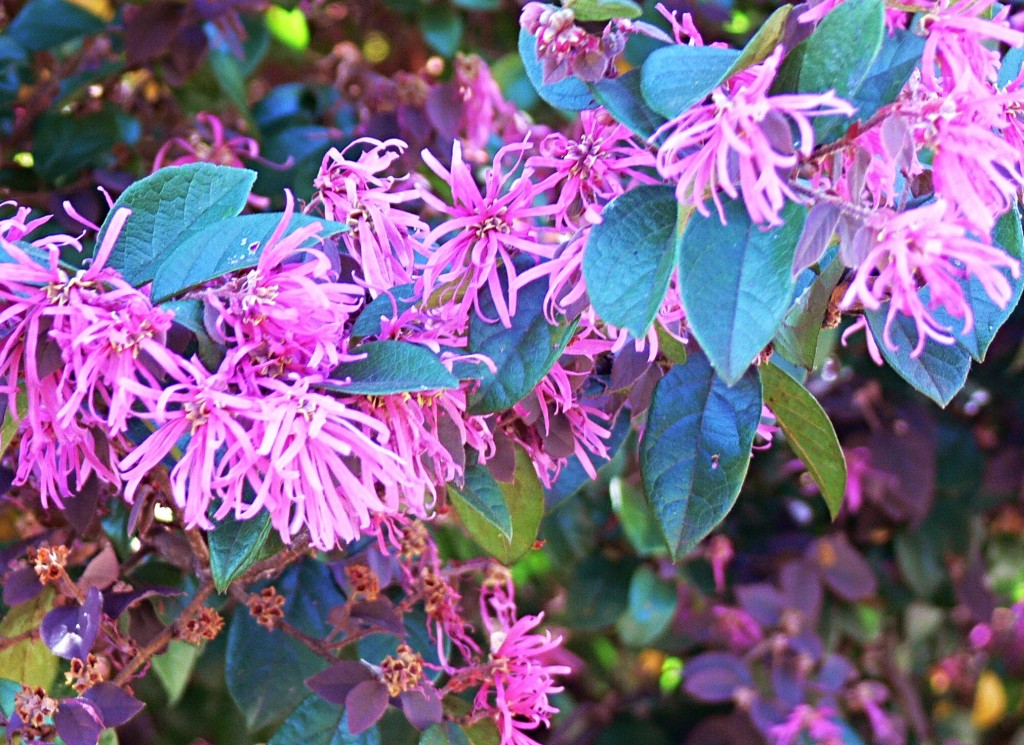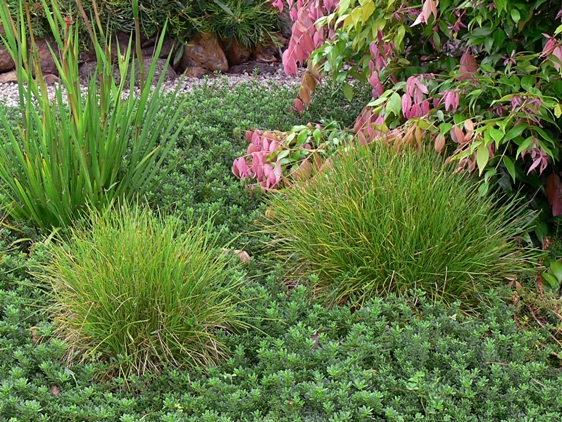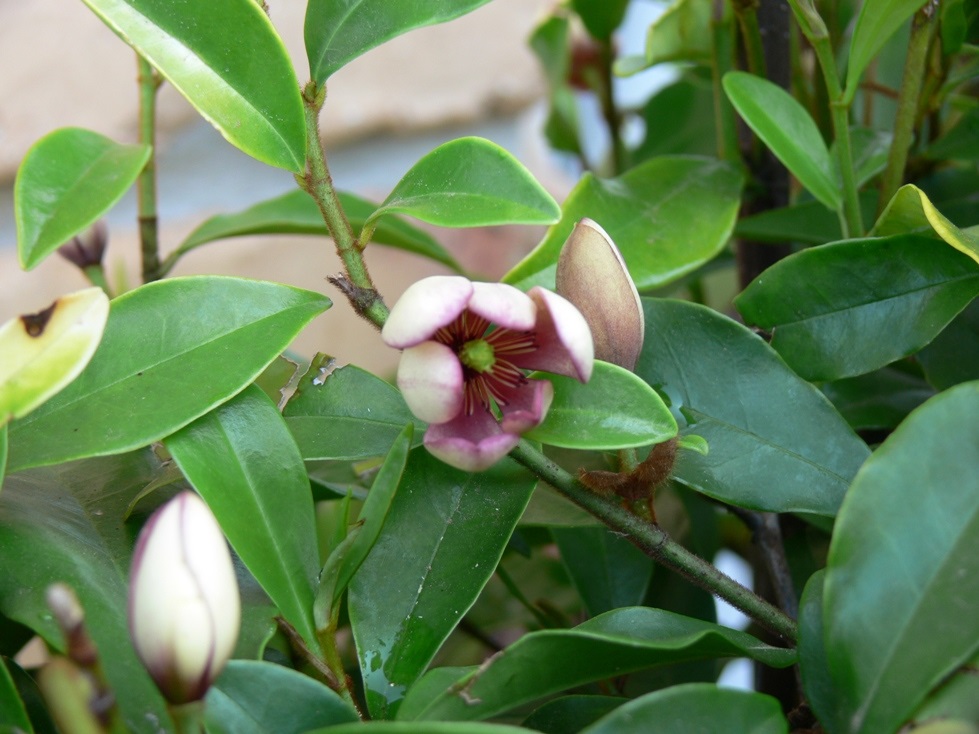Plant Directory
Fringe Flower (Loropetalum)
Loropetalum chinense, also known as The Fringe Flower is an outstanding flowering shrub. It dropped out of favour for a while, being considered a “Grandma’s Plant”, though has recently regained popularity through the release of new cultivars and also the increasing awareness that Grandma knew what she was doing. The plants she chose required little maintenance and could survive extended dry spells.
The name is derived from the Greek loros or Latin lorum meaning strap or thong and petalum meaning petal. While the genus name chinense means originating from China, this plant can be found growing naturally from the foothills of the Himalayas through to Japan.
In its original white or cream flowering form, it is a shrub up to 4 metres high. More recent cultivars with deep pink flowers, tend to be 1.5 -2m and about 2m wide, a size more suited to the suburban garden. “China Pink” is a popular cultivar in Australia.
The Loropetalum is generally an evergreen plant but if grown in cooler climates, the it will display a deciduous habit. New foliage has a red/purple colour and as the leaves mature the change to green/bronze. This habit tied in with the flowering on and off throughout the year, provides an ever changing display, a visual feast with little effort.
Left unpruned the branches will gracefully curve downwards displaying a lovely, broad rounded form. Loropetalum can also be pruned into many shapes and sizes. As a border hedge, the changing colour adds interest to you garden beds. It can also be pruned as a screening hedge for fencing or sheds and as a loose topiary; you can’t go past a pink love heart. If garden space is an issue for you, Loropetalum also makes a good tub specimen. In a pot you will need to provide it with adequate all round light and a regular supply of water.
Planted in full sun a Loropetalum shrub will remain dense and flower well. It will also enjoy being used as an understory plant, with a more open form an considerably less flowers.
This shrub will cope with average soil tending towards acidic. While it handles dry periods very well, good water supply at some point of the year will keep your Loropetalum looking good all year long. This can be seen on the Range at the moment. We have had little rain for 2 months, yet many specimens have been giving us a fabulous winter display.
Pruning after flowering will give you a denser flower display the following year though as Loropetalum flowers so profusely XXXXXXXX
Propagation is by semi hardwood cuttings in late spring or summer or fresh seed. Plants produced by seed will be slow to grow and will not be true to the form or colour of the parent plant.
If its hassle free gardening you are after, take a leaf or at least a semi-hardwood cutting out of your Grandma’s garden and plant a Loropetalum.




